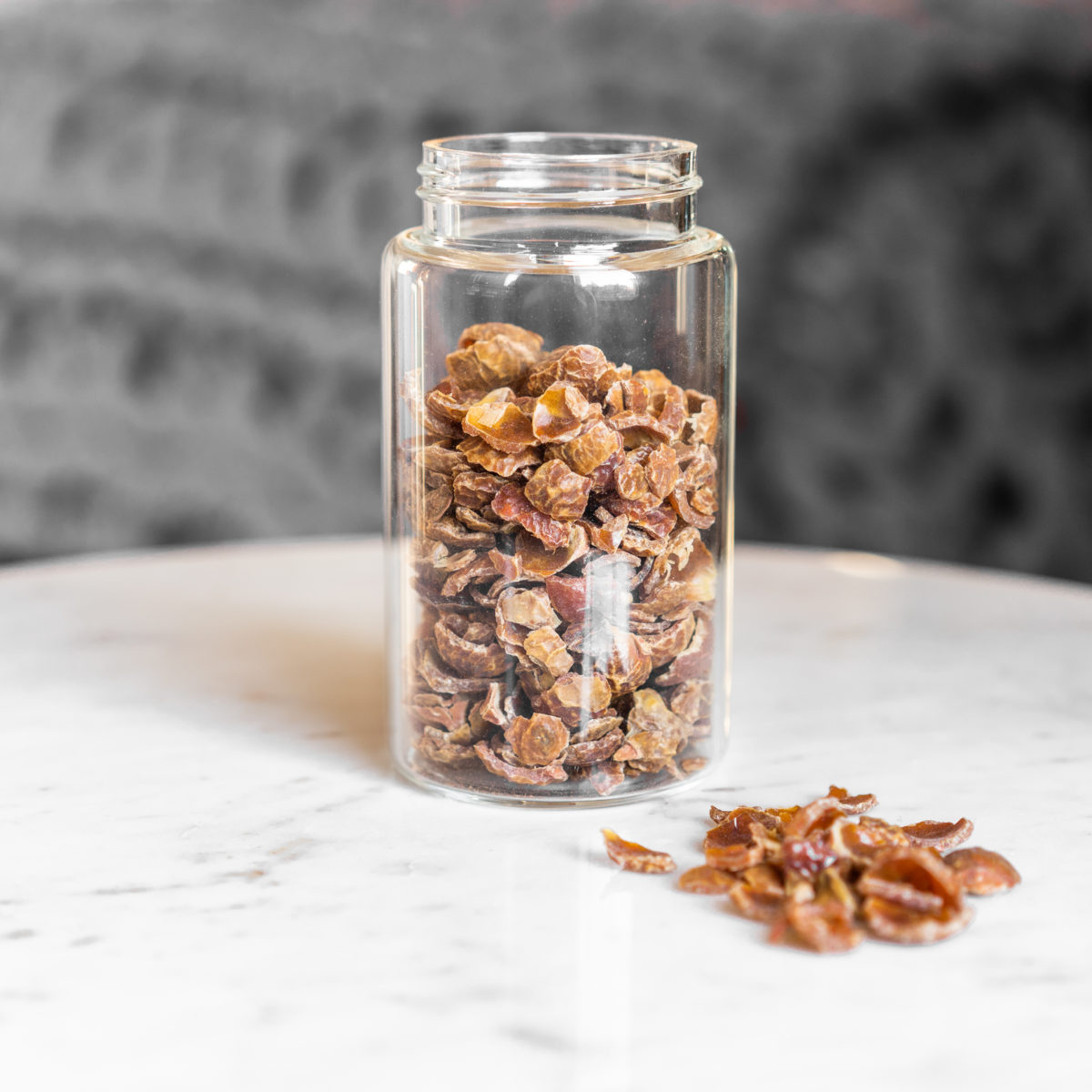
COMMON NAME (Chinese Name)
Chinese Soapberry (Wu Huan Zi)
BOTANICAL NAME
Sapindus mukorossi
USES
Topical or oral supplementation using an extract made from the powdered root bark of the Chinese soapberry tree may help alleviate the symptoms of various inflammatory conditions. Both topical and oral use of Chinese soapberry seed extracts may also help promote wound healing. Though not a substitute for antibiotics in the case of serious infection, this finding may indicate that Chinese soapberry oral supplements and topical products may help manage the symptoms of acne and other mild wounding skin conditions. These same findings suggest that a dilute rinse made with Chinese soapberry extract may help heal minor burns (like sunburns).
Similarly, ethanol-based extracts have notable antibacterial effects both when applied topically and ingested (taking Chinese soapberry by mouth may help cure the H. Pylori infections that cause stomach ulcers). Interestingly, in cases where Chinese soapberry proves effective against a particular microbe, there seems to be little chance of the bacteria developing a resistance to its actions even after repeated exposure (making Chinese soapberry extracts a potential — but still unproven — therapy for multi-drug resistant bacterial infections).
Cold-water decoction of raw Chinese soapberry fruits yields an extract that makes an excellent functional botanical emulsifier, meaning that (when applied topically) it can break down both synthetic and biological oils on the skin. Crude water-based extracts may prove fungicidal against certain strains of candida involved in skin-based and vaginal yeast infections. Using Chinese soapberry extract in dilute hair and body washes can also treat lice infestations.
In Chinese medicine soapberry is categorized as an herb that warms and clears phlegm.. It is classified as bitter, neutral, slightly toxic. It primarily affects the Heart and Lung meridians.
PREPARATION & ADMINISTRATION
The leaves, seeds, bark, and roots of the Chinese soapberry tree are often used interchangeably in medicinal and cosmeceutical applications. Whether taken by mouth or applied topically, the most common preparations of Chinese soapberry plant parts are hot- and cold-water decoctions as well as alcohol-based extractions.
PRECAUTIONS
When applied topically, Chinese soaptree extract may have the effect of lightening the skin, including diminishing the appearance of freckles. Otherwise, there are no known side-effects of long-term use or contraindications for use. Interestingly, there are no known reported instances of allergic reaction to the various topical applications of Chinese soaptree extracts, making it a potentially useful alternative to synthetic self-cleaning products for people with sensitive skin; however, you should consult with a certified herbalist, physician or other qualified healthcare professional before taking Chinese soaptree.
REFERENCES
Chen, Chang-Chih, et al. “Effects of Sapindus Mukorossi Seed Oil on Skin Wound Healing: In Vivo and in Vitro Testing.” International Journal of Molecular Sciences, vol. 20, no. 10, 2019, p. 2579., doi:10.3390/ijms20102579.
Ibrahim, Mohammed, et al. “Hepatoprotective Activity of Sapindus Mukorossi and Rheum Emodi Extracts: In Vitro and in Vivo Studies.” World Journal of Gastroenterology, vol. 14, no. 16, 2008, p. 2566., doi:10.3748/wjg.14.2566.
Jose, Sophy et al. “Anti-hypertensive activity of aqueous and methanolic leaf extracts of Schleichera oleosa (Lour.) Merr.” (2019).
Shah, Madeha, et al. “Evaluation of Antioxidant, Anti-Inflammatory, Analgesic and Antipyretic Activities of the Stem Bark of Sapindus Mukorossi.” BMC Complementary and Alternative Medicine, vol. 17, no. 1, 2017, doi:10.1186/s12906-017-2042-3.
Suhagia, Bhanubhai & Rathod, I & Sindhu, Sunil. (2011). Sapindus mukorossi (areetha): An overview. Int J Pharm Sci Res. 2.
Upadhyay, Aparna, & Singh, D.K.. (2012). Pharmacological effects of Sapindus mukorossi. Revista do Instituto de Medicina Tropical de São Paulo, 54(5), 273-280. https://doi.org/10.1590/S0036-46652012000500007

Comments (0)